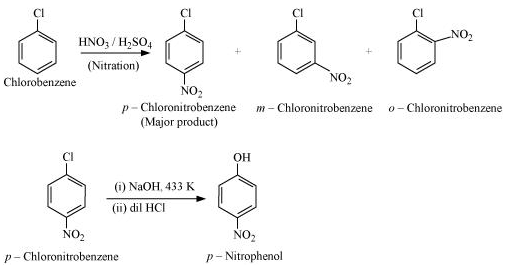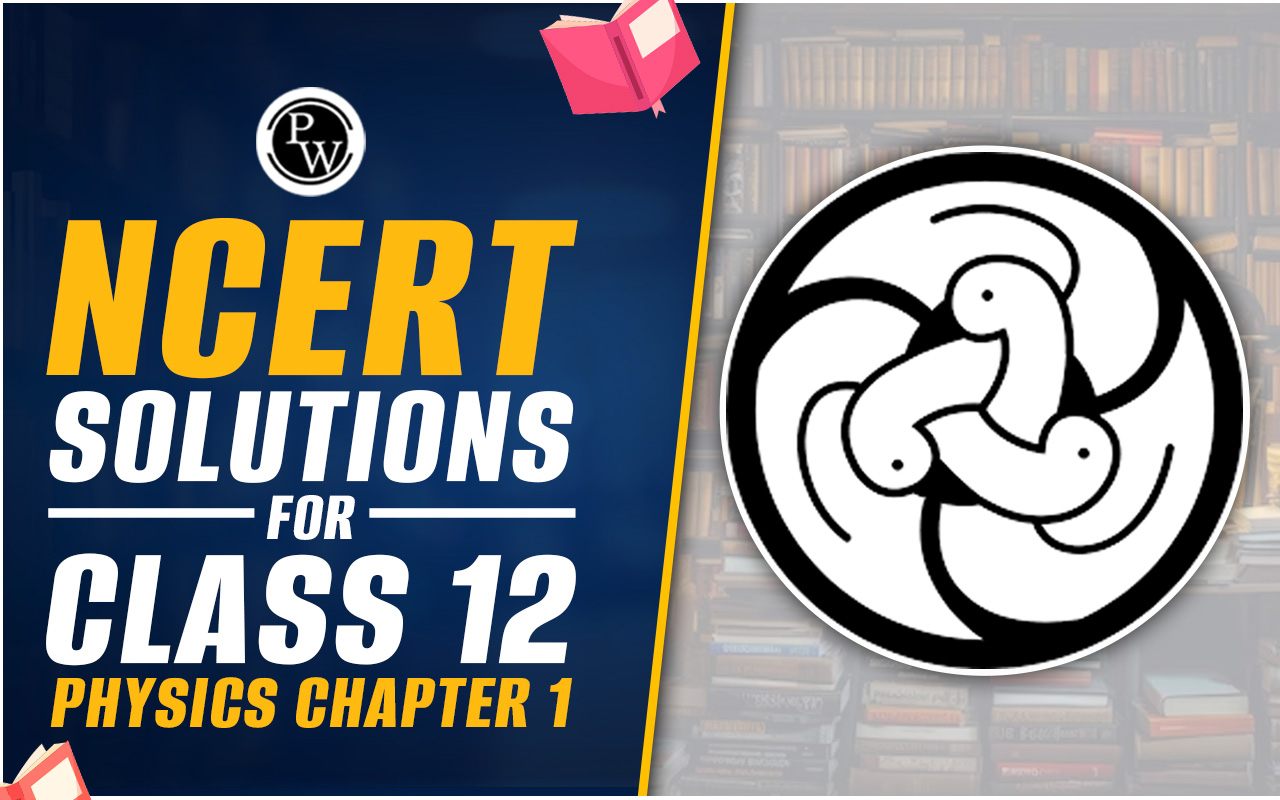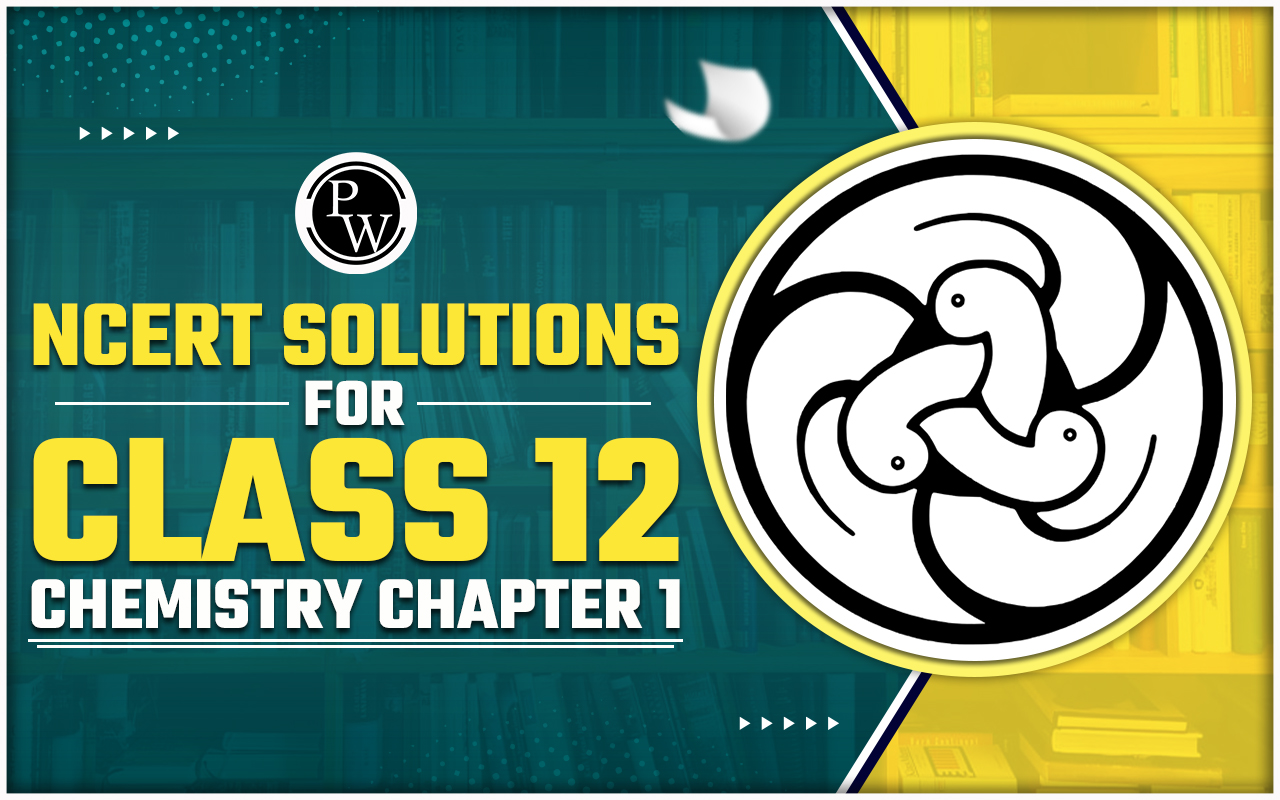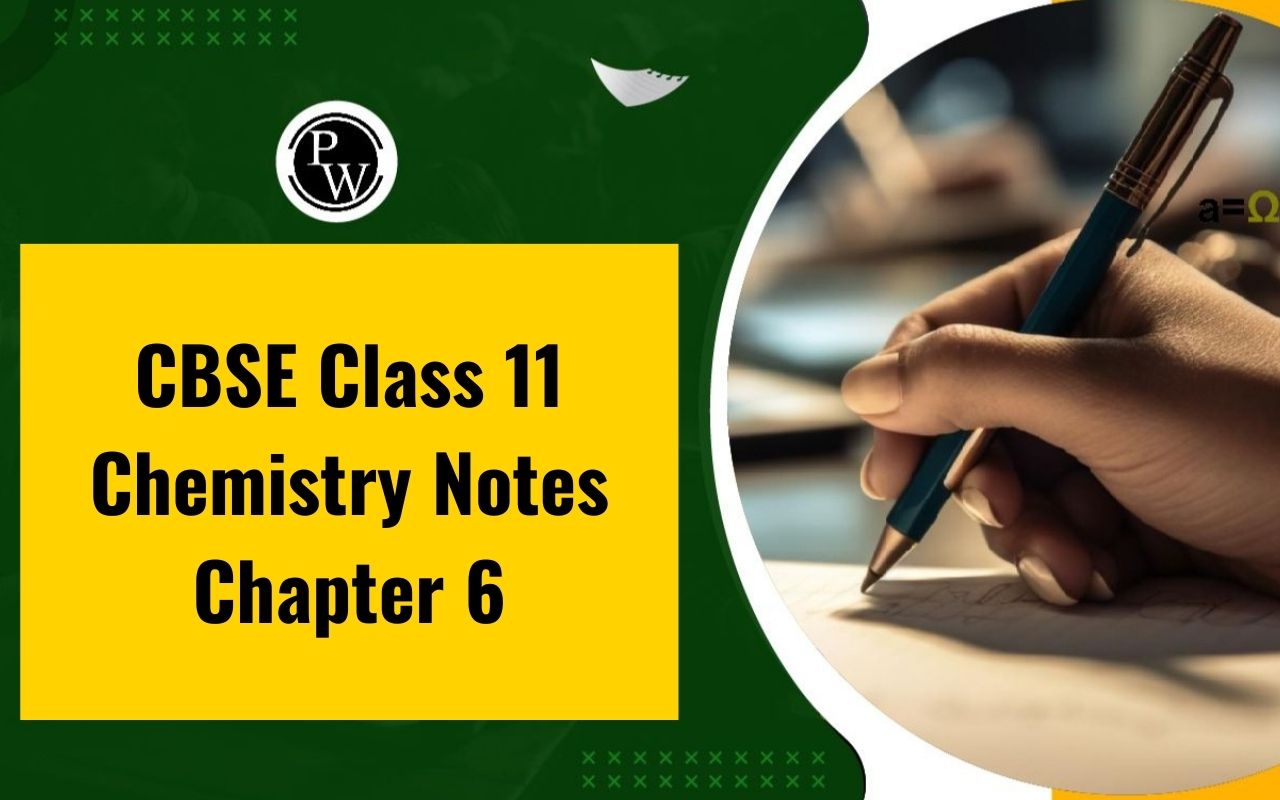
NCERT Solutions for Class 12 Chemistry Chapter 10 Haloalkanes and Haloarenes is prepared by our senior and renowned teachers of Physics Wallah primary focus while solving these questions of class-12 in the NCERT textbook, also do read theory of this Chapter 10 Haloalkanes and Haloarenes while going before solving the NCERT questions. Our Physics Wallah team Prepared Other Subjects NCERT Solutions for class 12.
NCERT Solutions for Class 12 Chemistry Chapter 10 Overview
NCERT Solutions for Class 12 Chemistry Chapter 10 cover several important topics. It is highly recommended for students to review each topic thoroughly in order to gain a comprehensive understanding of the concepts taught in the chapter and make optimal use of the provided solutionsThese solutions are the result of dedicated efforts by the Physics Wallah teachers aimed at assisting students in grasping the concepts covered in this chapter. By going through and practicing these solutions, the objective is for students to achieve excellent results in their exams effortlessly.
NCERT Solutions for Class 12 Chemistry Chapter 10
Answer the following Questions of NCERT Solutions for Class 12 Chemistry Chapter 10:
Question 1. Name the following halides according to IUPAC system and classify them as alkyl, allyl, benzyl (primary, secondary, tertiary), vinyl or aryl halides:(viii) CH3CH=C(Cl)CH2CH(CH3)2





























Since hydrocarbon does not react with chlorine in the dark, it cannot be an alkene. Thus, it should be a cycloalkane. Further, the hydrocarbon gives a single monochloro compound, C5H9Cl by reacting with chlorine in bright sunlight. Since a single monochloro compound is formed, the hydrocarbon must contain H−atoms that are all equivalent. Also, as all H−atoms of a cycloalkane are equivalent, the hydrocarbon must be a cycloalkane. Hence, the said compound is cyclopentane.
 Cyclopentane (C5H10) The reactions involved in the question are:
Cyclopentane (C5H10) The reactions involved in the question are:  Question 6. Write the isomers of the compound having formula C4H9Br.
Question 6. Write the isomers of the compound having formula C4H9Br.  1−Bromobutane
1−Bromobutane 2−Bromobutane
2−Bromobutane 1−Bromo−2−methylpropane
1−Bromo−2−methylpropane 2−Bromo−2−methylpropane
Question 7. Write the equations for the preparation of 1−iodobutane from (i) 1-butanol (ii) 1-chlorobutane (iii) but-1-ene. Solution :
2−Bromo−2−methylpropane
Question 7. Write the equations for the preparation of 1−iodobutane from (i) 1-butanol (ii) 1-chlorobutane (iii) but-1-ene. Solution :  (ii)
(ii) 
 Question 8. What are ambident nucleophiles? Explain with an example.
Question 8. What are ambident nucleophiles? Explain with an example.  Nitrite ion can attack through oxygen resulting in the formation of alkyl nitrites. Also, it can attack through nitrogen resulting in the formation of nitroalkanes.
Nitrite ion can attack through oxygen resulting in the formation of alkyl nitrites. Also, it can attack through nitrogen resulting in the formation of nitroalkanes.  Question 9. Which compound in each of the following pairs will react faster in SN2 reaction with OH−? (i) CH3Br or CH3I (ii) (CH3)3CCl or CH3Cl
Question 9. Which compound in each of the following pairs will react faster in SN2 reaction with OH−? (i) CH3Br or CH3I (ii) (CH3)3CCl or CH3Cl 

 (ii)
(ii)  In the given compound, there are two different sets of equivalent β-hydrogen atoms labelled as a and b. Thus, dehydrohalogenation of the compound yields two alkenes.
In the given compound, there are two different sets of equivalent β-hydrogen atoms labelled as a and b. Thus, dehydrohalogenation of the compound yields two alkenes.  Saytzeff’s rule implies that in dehydrohalogenation reactions, the alkene having a greater number of alkyl groups attached to a doubly bonded carbon atoms is preferably produced. Therefore, alkene (I) i.e., 2-methylbut-2-ene is the major product in this reaction.
Saytzeff’s rule implies that in dehydrohalogenation reactions, the alkene having a greater number of alkyl groups attached to a doubly bonded carbon atoms is preferably produced. Therefore, alkene (I) i.e., 2-methylbut-2-ene is the major product in this reaction.
 According to Saytzeff’s rule, in dehydrohalogenation reactions, the alkene having a greater number of alkyl groups attached to the doubly bonded carbon atom is preferably formed. Hence, alkene (I) i.e., 3,4,4-trimethylpent-2-ene is the major product in this reaction.
According to Saytzeff’s rule, in dehydrohalogenation reactions, the alkene having a greater number of alkyl groups attached to the doubly bonded carbon atom is preferably formed. Hence, alkene (I) i.e., 3,4,4-trimethylpent-2-ene is the major product in this reaction.Solution :
(i)


 (iv)
(iv) 
 (vi)
(vi) 


 (x)
(x)  Question 12. Explain why (i) the dipole moment of chlorobenzene is lower than that of cyclohexyl chloride? (ii) alkyl halides, though polar, are immiscible with water? (iii) Grignard reagents should be prepared under anhydrous conditions?
Question 12. Explain why (i) the dipole moment of chlorobenzene is lower than that of cyclohexyl chloride? (ii) alkyl halides, though polar, are immiscible with water? (iii) Grignard reagents should be prepared under anhydrous conditions? 
(ii) To be miscible with water, the solute-water force of attraction must be stronger than the solute-solute and water-water forces of attraction. Alkyl halides are polar molecules and so held together by dipole-dipole interactions. Similarly, strong H-bonds exist between the water molecules. The new force of attraction between the alkyl halides and water molecules is weaker than the alkyl halide-alkyl halide and water-water forces of attraction. Hence, alkyl halides (though polar) are immiscible with water.
(iii) Grignard reagents are very reactive. In the presence of moisture, they react to give alkanes.

Question 13. Give the uses of freon 12, DDT, carbon tetrachloride and iodoform.
Question 14. Write the structure of the major organic product in each of the following reactions:

 Question 15. Write the mechanism of the following reaction:
Question 15. Write the mechanism of the following reaction: 
 The given reaction is an SN2 reaction. In this reaction, CN− acts as the nucleophile and attacks the carbon atom to which Br is attached. CN− ion is an ambident nucleophile and can attack through both C and N. In this case, it attacks through the C-atom.
The given reaction is an SN2 reaction. In this reaction, CN− acts as the nucleophile and attacks the carbon atom to which Br is attached. CN− ion is an ambident nucleophile and can attack through both C and N. In this case, it attacks through the C-atom.  Question 16. Arrange the compounds of each set in order of reactivity towards SN2 displacement: (i) 2-Bromo-2-methylbutane, 1-Bromopentane, 2-Bromopentane (ii) 1-Bromo-3-methylbutane, 2-Bromo-2-methylbutane, 3-Bromo-2- methylbutane (iii) 1-Bromobutane, 1-Bromo-2,2-dimethylpropane, 1-Bromo-2-methylbutane, 1-Bromo-3-methylbutane.
Question 16. Arrange the compounds of each set in order of reactivity towards SN2 displacement: (i) 2-Bromo-2-methylbutane, 1-Bromopentane, 2-Bromopentane (ii) 1-Bromo-3-methylbutane, 2-Bromo-2-methylbutane, 3-Bromo-2- methylbutane (iii) 1-Bromobutane, 1-Bromo-2,2-dimethylpropane, 1-Bromo-2-methylbutane, 1-Bromo-3-methylbutane.  An SN2 reaction involves the approaching of the nucleophile to the carbon atom to which the leaving group is attached. When the nucleophile is sterically hindered, then the reactivity towards SN2 displacement decreases. Due to the presence of substituents, hindrance to the approaching nucleophile increases in the following order. 1-Bromopentane < 2-bromopentane < 2-Bromo-2-methylbutane Hence, the increasing order of reactivity towards SN2 displacement is: 2-Bromo-2-methylbutane < 2-Bromopentane < 1-Bromopentane (ii)
An SN2 reaction involves the approaching of the nucleophile to the carbon atom to which the leaving group is attached. When the nucleophile is sterically hindered, then the reactivity towards SN2 displacement decreases. Due to the presence of substituents, hindrance to the approaching nucleophile increases in the following order. 1-Bromopentane < 2-bromopentane < 2-Bromo-2-methylbutane Hence, the increasing order of reactivity towards SN2 displacement is: 2-Bromo-2-methylbutane < 2-Bromopentane < 1-Bromopentane (ii)  Since steric hindrance in alkyl halides increases in the order of 1° < 2° < 3°, the increasing order of reactivity towards SN2 displacement is 3° < 2° < 1°. Hence, the given set of compounds can be arranged in the increasing order of their reactivity towards SN2 displacement as: 2-Bromo-2-methylbutane < 2-Bromo-3-methylbutane < 1-Bromo-3-methylbutane [2-Bromo-3-methylbutane is incorrectly given in NCERT] (iii)
Since steric hindrance in alkyl halides increases in the order of 1° < 2° < 3°, the increasing order of reactivity towards SN2 displacement is 3° < 2° < 1°. Hence, the given set of compounds can be arranged in the increasing order of their reactivity towards SN2 displacement as: 2-Bromo-2-methylbutane < 2-Bromo-3-methylbutane < 1-Bromo-3-methylbutane [2-Bromo-3-methylbutane is incorrectly given in NCERT] (iii) 
Question 17. Out of C6H5CH2Cl and C6H5CHClC6H5, which is more easily hydrolysed by aqueous KOH?

Question 18. p-Dichlorobenzene has higher m.p. and lower solubility than those of o- and m-isomers. Discuss.
 p-Dichlorobenzene is more symmetrical than o-and m-isomers. For this reason, it fits more closely than o-and m-isomers in the crystal lattice. Therefore, more energy is required to break the crystal lattice of p-dichlorobenzene. As a result, p-dichlorobenzene has a higher melting point and lower solubility than o-and m-isomers.
p-Dichlorobenzene is more symmetrical than o-and m-isomers. For this reason, it fits more closely than o-and m-isomers in the crystal lattice. Therefore, more energy is required to break the crystal lattice of p-dichlorobenzene. As a result, p-dichlorobenzene has a higher melting point and lower solubility than o-and m-isomers.Question 19. How the following conversions can be carried out? (i) Propene to propan-1-ol (ii) Ethanol to but-1-yne (iii) 1-Bromopropane to 2-bromopropane (iv) Toluene to benzyl alcohol (v) Benzene to 4-bromonitrobenzene (vi) Benzyl alcohol to 2-phenylethanoic acid (vii) Ethanol to propanenitrile (viii) Aniline to chlorobenzene (ix) 2-Chlorobutane to 3, 4-dimethylhexane (x) 2-Methyl-1-propene to 2-chloro-2-methylpropane (xi) Ethyl chloride to propanoic acid (xii) But-1-ene to n-butyliodide (xiii) 2-Chloropropane to 1-propanol (xiv) Isopropyl alcohol to iodoform (xv) Chlorobenzene to p-nitrophenol (xvi) 2-Bromopropane to 1-bromopropane (xvii) Chloroethane to butane (xviii) Benzene to diphenyl (xix) tert-Butyl bromide to isobutyl bromide (xx) Aniline to phenylisocyanide Solution : (i)
 (ii)
(ii)  (iii)
(iii)  (iv)
(iv)  (v)
(v)  (vi)
(vi)  (vii)
(vii)  (viii)
(viii)  (ix)
(ix)  (x)
(x)  (xi)
(xi)  (xii)
(xii)  (xiii)
(xiii)  (xiv)
(xiv)  (xv)
(xv)  (xvi)
(xvi)  (xvii)
(xvii)  (xviii)
(xviii)  (xix)
(xix)  (xx)
(xx)  Question 20. The treatment of alkyl chlorides with aqueous KOH leads to the formation of alcohols but in the presence of alcoholic KOH, alkenes are major products. Explain.
Question 20. The treatment of alkyl chlorides with aqueous KOH leads to the formation of alcohols but in the presence of alcoholic KOH, alkenes are major products. Explain.  On the other hand, an alcoholic solution of KOH contains alkoxide (RO−) ion, which is a strong base. Thus, it can abstract a hydrogen from the β-carbon of the alkyl chloride and form an alkene by eliminating a molecule of HCl.
On the other hand, an alcoholic solution of KOH contains alkoxide (RO−) ion, which is a strong base. Thus, it can abstract a hydrogen from the β-carbon of the alkyl chloride and form an alkene by eliminating a molecule of HCl.  OH− ion is a much weaker base than RO− ion. Also, OH− ion is highly solvated in an aqueous solution and as a result, the basic character of OH− ion decreases. Therefore, it cannot abstract a hydrogen from the β-carbon.
OH− ion is a much weaker base than RO− ion. Also, OH− ion is highly solvated in an aqueous solution and as a result, the basic character of OH− ion decreases. Therefore, it cannot abstract a hydrogen from the β-carbon.Question 21. Primary alkyl halide C4H9Br
 Therefore, compound (a) is either n−butyl bromide or isobutyl bromide. Now, compound (a) reacts with Na metal to give compound (b) of molecular formula, C8H18, which is different from the compound formed when n−butyl bromide reacts with Na metal. Hence, compound (a) must be isobutyl bromide.
Therefore, compound (a) is either n−butyl bromide or isobutyl bromide. Now, compound (a) reacts with Na metal to give compound (b) of molecular formula, C8H18, which is different from the compound formed when n−butyl bromide reacts with Na metal. Hence, compound (a) must be isobutyl bromide.  Thus, compound (d) is 2, 5−dimethylhexane. It is given that compound (a) reacts with alcoholic KOH to give compound (b). Hence, compound (b) is 2−methylpropene.
Thus, compound (d) is 2, 5−dimethylhexane. It is given that compound (a) reacts with alcoholic KOH to give compound (b). Hence, compound (b) is 2−methylpropene.  Also, compound (b) reacts with HBr to give compound (c) which is an isomer of (a). Hence, compound (c) is 2−bromo−2−methylpropane.
Also, compound (b) reacts with HBr to give compound (c) which is an isomer of (a). Hence, compound (c) is 2−bromo−2−methylpropane.  Question 22. What happens when
Question 22. What happens when  (ii) When bromobenzene is treated with Mg in the presence of dry ether, phenylmagnesium bromide is formed.
(ii) When bromobenzene is treated with Mg in the presence of dry ether, phenylmagnesium bromide is formed. 



 Question 23. Write structures of the following compounds:
Question 23. Write structures of the following compounds:  2-Chloro-3-methyl pentane (ii)
2-Chloro-3-methyl pentane (ii)  1-Chloro-4-ethylcyclohexane
1-Chloro-4-ethylcyclohexane
 1, 4-Dibromobut-2-ene
1, 4-Dibromobut-2-ene 1-Bromo-4-sec-butyl-2-methylbenzene
1-Bromo-4-sec-butyl-2-methylbenzene Question 24. Why is sulphuric acid not used during the reaction of alcohols with KI?
 Since H2SO4 is an oxidizing agent, it oxidizes HI (produced in the reaction to I2).
Since H2SO4 is an oxidizing agent, it oxidizes HI (produced in the reaction to I2). 
Question 25. Write structures of different dihalogen derivatives of propane.
 1, 1-Dibromopropane
1, 1-Dibromopropane 2, 2-Dibromopropane
2, 2-Dibromopropane 1, 2-Dibromopropane
1, 2-Dibromopropane 1, 3-Dibromopropane
1, 3-DibromopropaneQuestion 26. Among the isomeric alkanes of molecular formula C5H12, identify the one that on photochemical chlorination yields (i) A single monochloride.



Question 27. Draw the structures of major monohalo products in
 Solution :
Solution : 
Question 28. Arrange each set of compounds in order of increasing boiling points.
 For alkyl halides containing the same alkyl group, the boiling point increases with an increase in the atomic mass of the halogen atom. Since the atomic mass of Br is greater than that of Cl, the boiling point of bromomethane is higher than that of chloromethane. Further, for alkyl halides containing the same alkyl group, the boiling point increases with an increase in the number of halides.
For alkyl halides containing the same alkyl group, the boiling point increases with an increase in the atomic mass of the halogen atom. Since the atomic mass of Br is greater than that of Cl, the boiling point of bromomethane is higher than that of chloromethane. Further, for alkyl halides containing the same alkyl group, the boiling point increases with an increase in the number of halides. For alkyl halides containing the same halide, the boiling point increases with an increase in the size of the alkyl group. Thus, the boiling point of 1-chlorobutane is higher than that of isopropyl chloride and 1-chloropropane. Further, the boiling point decreases with an increase in branching in the chain. Thus, the boiling point of isopropyl alcohol is lower than that of 1-chloropropane. Hence, the given set of compounds can be arranged in the increasing order of their boiling points as: Isopropyl chloride < 1-Chloropropane < 1-Chlorobutane
For alkyl halides containing the same halide, the boiling point increases with an increase in the size of the alkyl group. Thus, the boiling point of 1-chlorobutane is higher than that of isopropyl chloride and 1-chloropropane. Further, the boiling point decreases with an increase in branching in the chain. Thus, the boiling point of isopropyl alcohol is lower than that of 1-chloropropane. Hence, the given set of compounds can be arranged in the increasing order of their boiling points as: Isopropyl chloride < 1-Chloropropane < 1-Chlorobutane Question 29. Which alkyl halide from the following pairs would you expect to react more rapidly by an SN2 mechanism? Explain your answer.
 Solution : (i)
Solution : (i)  2-bromobutane is a 2° alkylhalide whereas 1-bromobutane is a 1° alkyl halide. The approaching of nucleophile is more hindered in 2-bromobutane than in 1-bromobutane. Therefore, 1-bromobutane reacts more rapidly than 2-bromobutane by an SN2 mechanism.
2-bromobutane is a 2° alkylhalide whereas 1-bromobutane is a 1° alkyl halide. The approaching of nucleophile is more hindered in 2-bromobutane than in 1-bromobutane. Therefore, 1-bromobutane reacts more rapidly than 2-bromobutane by an SN2 mechanism. 2-Bromobutane is 2° alkylhalide whereas 2-bromo-2-methylpropane is 3° alkyl halide. Therefore, greater numbers of substituents are present in 3° alkyl halide than in 2° alkyl halide to hinder the approaching nucleophile. Hence, 2-bromobutane reacts more rapidly than 2-bromo-2-methylpropane by an SN2 mechanism.
2-Bromobutane is 2° alkylhalide whereas 2-bromo-2-methylpropane is 3° alkyl halide. Therefore, greater numbers of substituents are present in 3° alkyl halide than in 2° alkyl halide to hinder the approaching nucleophile. Hence, 2-bromobutane reacts more rapidly than 2-bromo-2-methylpropane by an SN2 mechanism. Both the alkyl halides are primary. However, the substituent −CH3 is at a greater distance to the carbon atom linked to Br in 1-bromo-3-methylbutane than in 1-bromo-2-methylbutane. Therefore, the approaching nucleophile is less hindered in case of the former than in case of the latter. Hence, the former reacts faster than the latter by SN2 mechanism.
Both the alkyl halides are primary. However, the substituent −CH3 is at a greater distance to the carbon atom linked to Br in 1-bromo-3-methylbutane than in 1-bromo-2-methylbutane. Therefore, the approaching nucleophile is less hindered in case of the former than in case of the latter. Hence, the former reacts faster than the latter by SN2 mechanism.Question 30. In the following pairs of halogen compounds, which compound undergoes faster SN1 reaction?


 SN1 reaction proceeds via the formation of carbocation. The alkyl halide (I) is 3° while (II) is 2°. Therefore, (I) forms 3° carbocation while (II) forms 2° carbocation. Greater the stability of the carbocation, faster is the rate of SN1 reaction. Since 3° carbocation is more stable than 2° carbocation. (I), i.e. 2−chloro-2-methylpropane, undergoes faster SN1 reaction than (II) i.e., 3-chloropentane.
SN1 reaction proceeds via the formation of carbocation. The alkyl halide (I) is 3° while (II) is 2°. Therefore, (I) forms 3° carbocation while (II) forms 2° carbocation. Greater the stability of the carbocation, faster is the rate of SN1 reaction. Since 3° carbocation is more stable than 2° carbocation. (I), i.e. 2−chloro-2-methylpropane, undergoes faster SN1 reaction than (II) i.e., 3-chloropentane. The alkyl halide (I) is 2° while (II) is 1°. 2° carbocation is more stable than 1° carbocation. Therefore, (I), 2−chloroheptane, undergoes faster SN1 reaction than (II), 1-chlorohexane.
The alkyl halide (I) is 2° while (II) is 1°. 2° carbocation is more stable than 1° carbocation. Therefore, (I), 2−chloroheptane, undergoes faster SN1 reaction than (II), 1-chlorohexane.Question 31. Identify A, B, C, D, E, R and R1 in the following:
 Solution :
Solution :  Since D of D2O gets attached to the carbon atom to which MgBr is attached, C is
Since D of D2O gets attached to the carbon atom to which MgBr is attached, C is  Therefore, the compound R − Br is
Therefore, the compound R − Br is  When an alkyl halide is treated with Na in the presence of ether, a hydrocarbon containing double the number of carbon atoms as present in the original halide is obtained as product. This is known as Wurtz reaction. Therefore, the halide, R1−X, is
When an alkyl halide is treated with Na in the presence of ether, a hydrocarbon containing double the number of carbon atoms as present in the original halide is obtained as product. This is known as Wurtz reaction. Therefore, the halide, R1−X, is  Therefore, compound D is
Therefore, compound D is  And, compound E is
And, compound E is 

NCERT Solutions for Class 12 Chemistry Chapter 10 FAQs
Which chapter is easy in chemistry?
The easiest chapters are the last ones that are biomolecules, polymers and chemistry in everyday life.
Which chemistry is more difficult?
Organic chemistry is generally considered to be more difficult than inorganic chemistry.
Which is the biggest chapter in organic chemistry?
Yes, Aldehydes and Ketones is one of the most essential (high weightage) chapters of JEE Main, as it is a part of Organic Chemistry, which accounts for more than a third of the paper.
Which chapter is chemistry in everyday life?
Class 12 Chemistry Chapter 16 Chemistry in Everyday Life
What are branches of chemistry?
The five primary branches of chemistry are physical chemistry, organic chemistry, inorganic chemistry, analytical chemistry, and biochemistry.
🔥 Trending Blogs
Talk to a counsellorHave doubts? Our support team will be happy to assist you!

Check out these Related Articles
Free Learning Resources
PW Books
Notes (Class 10-12)
PW Study Materials
Notes (Class 6-9)
Ncert Solutions
Govt Exams
Class 6th to 12th Online Courses
Govt Job Exams Courses
UPSC Coaching
Defence Exam Coaching
Gate Exam Coaching
Other Exams
Know about Physics Wallah
Physics Wallah is an Indian edtech platform that provides accessible & comprehensive learning experiences to students from Class 6th to postgraduate level. We also provide extensive NCERT solutions, sample paper, NEET, JEE Mains, BITSAT previous year papers & more such resources to students. Physics Wallah also caters to over 3.5 million registered students and over 78 lakh+ Youtube subscribers with 4.8 rating on its app.
We Stand Out because
We provide students with intensive courses with India’s qualified & experienced faculties & mentors. PW strives to make the learning experience comprehensive and accessible for students of all sections of society. We believe in empowering every single student who couldn't dream of a good career in engineering and medical field earlier.
Our Key Focus Areas
Physics Wallah's main focus is to make the learning experience as economical as possible for all students. With our affordable courses like Lakshya, Udaan and Arjuna and many others, we have been able to provide a platform for lakhs of aspirants. From providing Chemistry, Maths, Physics formula to giving e-books of eminent authors like RD Sharma, RS Aggarwal and Lakhmir Singh, PW focuses on every single student's need for preparation.
What Makes Us Different
Physics Wallah strives to develop a comprehensive pedagogical structure for students, where they get a state-of-the-art learning experience with study material and resources. Apart from catering students preparing for JEE Mains and NEET, PW also provides study material for each state board like Uttar Pradesh, Bihar, and others
Copyright © 2025 Physicswallah Limited All rights reserved.
Get App









